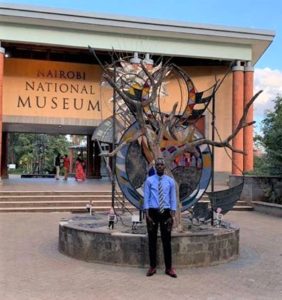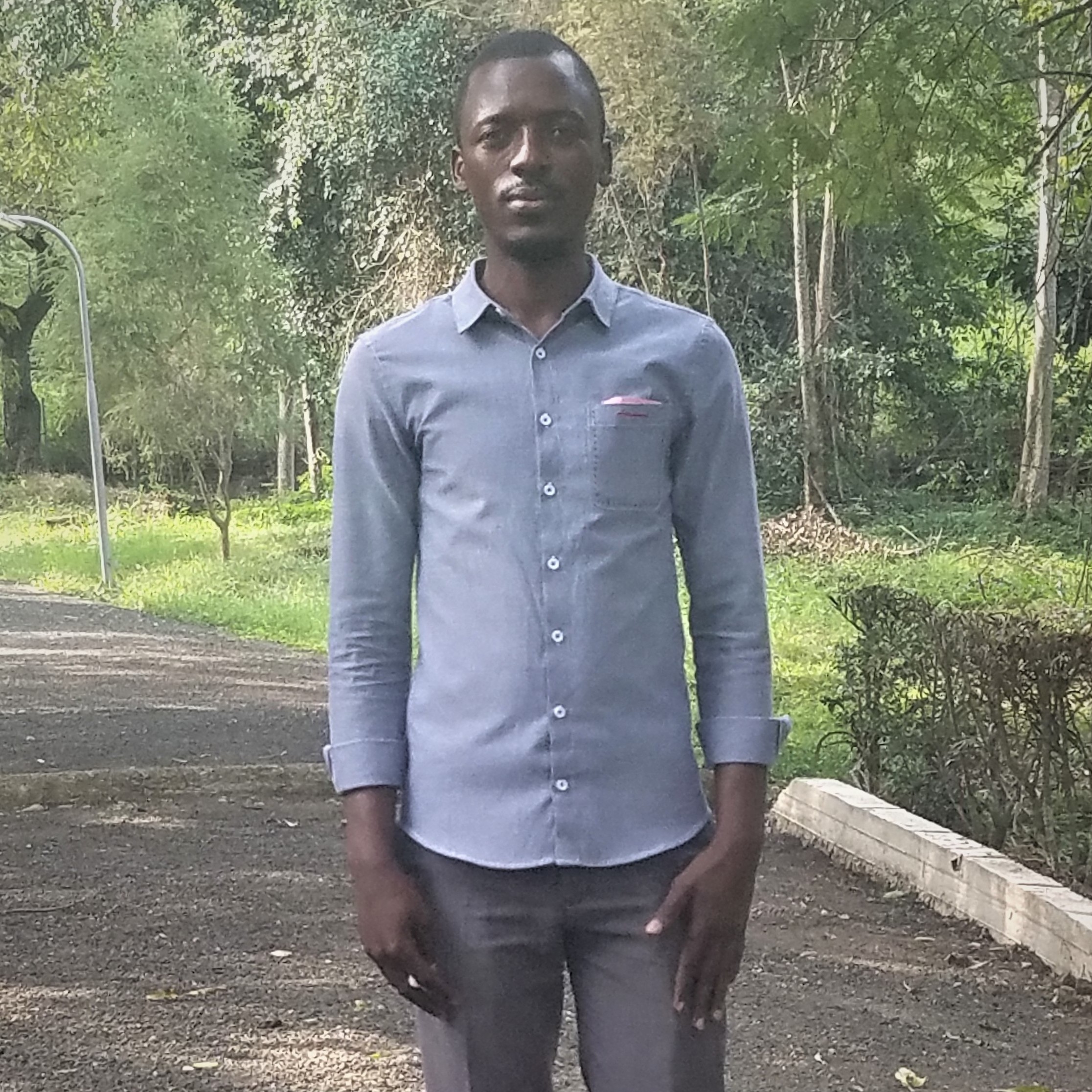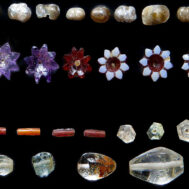Muhigirwa Kinyunyi Claude is an organizer and leader in the LUCHA Movement for Change. LUCHA, as it is known, is a grassroots, pro-democracy youth-led movement in the Democratic Republic of the Congo that organizes nonviolently to build a better society. It has taken on aspects of civil change as small as cleaning trash from the streets in Goma, to becoming an important force for reform at the highest levels of national government. Since its inception among a group of friends at the University of Goma seven years ago, LUCHA now comprises at least a thousand local organizers and many more supporters across the DRC who are actively involved in campaigns on issues from clean water to free elections. In committing to peace and change, its leaders put their safety and even their lives on the line every day. Many have been arrested, and some have died. As a youth-led movement, LUCHA has shed many of the conventions associated with African organizations; it is gender diverse, and its members think and work creatively, using art, music, and social media to communicate, and breaking new ground in cooperative endeavors with African youth across traditional cultural, political, and national borders.

Muhigirwa Kinyunyi Claude
KHF: Tell me about the art scene in DRC.
MKC: In the DRC, we have a problem of lack of resources in the art and humanities sector; there is a museum in Lubumbashi and in Kinshasa. Like all African countries, most of our art pieces have been taken to Europe. Last year president Kabila said that Belgium must refund and resend some of our products and art pieces.
Our art is especially used within traditional culture. It’s a sign of power in some cultures, like in Central Congo, we have old kingdoms. Art is used as a sign of power. Mobuto used his cane with historical sculptures from a past dynasty as a kind of power…showing tradition and connection to the old kingdom. They are used for praying in some cases. Traditional art is used for religion and social matters. In our tradition, it is always used to justify a dynasty. If you’re a member of this dynasty, the art is a matter of identity.
The art of Congo is unchanging. It’s a problem that there is art that you can’t identify as belonging to a certain period. There is not enough documentation of historical products or arts. Authors of these pieces of art are anonymous and more community-based versus focused on the individual as is our culture.
Modern artists in Congo are trying to be global – not to only be about the Congo. We are trying to make sure we are part of the world by trying to work on humanity and culture, not only for Congo/Central Africa or the larger continent, but working on world culture. That doesn’t mean we are forgetting authenticity or identity. There are certain artists that work on trying to keep artworks umbuntu, Bantu culture.
We have schools of arts and Academie des Beaux Arts in Kinshasa. There are celebrated artists, who are the fruit of those institutions and doing good things, but in this situation with ongoing violent conflict and war from 1996-98 until now, artists have been trying to express the situation of people and their struggles and experiences through art. Someone can draw or paint and try to express what he’s feeling through that. We have artists who are printers, musicians, comedians, so many! Actually, in Goma, art is a means to express what we are feeling about peace and freedom and human rights and struggle for women’s rights. We try to have a global art expression in Goma and DRC in this way, to fight against violence, war, and problems in society and many across the continent recognize the important role of the Congo in art.
This is contrary to the situation in the 1970s-1980-1990s. Then people were making art to express the power of Mobutu, dynastic traditions, lions, sculptures or something like that, for political reasons.
The first meaning of art and tradition, if you are trying to connect them to dynasty and kingdom, you use arts to express the power of dynasty, prayer and religion and social matters and connection to ancestors. The second is about identity, communal identity, and is connected to masks and sculptures. If you are King or powerful, you may have these kinds of arts, but in a modern context, arts have been used to express and fight against violence, power over others, lack of freedom, and modern society.
KHF: How have the years of conflict affected the views of people in the DRC about art and culture?
MKC: There are issues about how art and tradition is used, especially in religion and Christianizing, which affects peoples’ views about art. Some fundamentalists teach people that art is demonic and anti-religious. But art has been used as a way to connect communities. When we look at history, there have been relationships based among equality among people. Now people are trying to identify themselves with that point of view. You are in Congo and in one certain province, but you are speaking the same culture, language, ruler, ethnicity. Art is used to show that borders cannot separate them. Art can facilitate connections among people.
In the general opinion of people, art is also a business. Artists are trying to wake up the local markets, even send their work to international markets. When we have a ceremony or peace activities, artists may come and show their works. They make art not only for the international market, but also for the local market. There is a need for art in society.
KHF: How is the current conflict affecting culture in DRC including its cultural lifeways, such as connection to place, language, art, handiworks, traditions, dress, and ceremony?

Claude Kinyunyi at Nairobi National Museum.
MKC: Across Congo we have broadly the same values and same culture, but we lack the infrastructure to connect. But in the area of culture and heritage, there is not a great problem. In all the different provinces, in the equatorial forest region, we may eat differently, but our music is the same. Another thing separating us culturally is language, there are four national languages, but over 400 dialects, a great diversity of people if you just consider the context of language. We feel there is a need of unity among Congolese people; but language and infrastructure make it difficult.
People felt the main problem was [President] Kabila, but we in LUCHA believe that this is just the beginning of change. We want to connect networks and movements across the country. It’s not easy. It needs resources and money to build across the country. Culture can affect peace and development and can be used to fight for freedom, to resist, all of that.
KHF: Does connection to culture and tradition strengthen people’s identity or stifle it? What are youth and others doing to promote modern art, music, creativity?
MKC: From 2015 onwards, we have been working with more artists, especially musicians – music and its values. We have a great history of music, but mainly this is music of love, romance and luxury, not music of resistance and struggle and social and economic justice and change. Most of our work is toward change, we have artists who are working in depth on that kind of activity. The most important thing may be to create a virtual network of all the artists and to propose common texts and values in support of an improved society. Recently, we’ve been trying to help them understand their responsibility. We had some artists and gave them texts and songs and they produced good songs about resistance, about freedom and human rights, and especially in Goma, artists write and sing about these themes.
KHF: How do music, poetry plays, themes, dance, sculpture, painting, mobilize people in other ways?
MKC: It’s creative resistance. For demonstrations, we use songs as a method of mobilizing. The visual artists and drawings work as a weapon to express what we feel. We have large festival: Festival Amani (Peace Festival)—a modern festival – we had artists from across Africa. We are using this as a way to promote Pan Africanism. Many artists are engaged in fighting for change. Compare 2005-2010 to today and activists are very engaged and songs have values for a new society. Artists are not neutral anymore.
The festival is always in January. Musicians, visual artists, and comedians express what they are feeling and about society. They denounce corruption, dictatorship. If we attack a problem in our society, we have to have a new song about that. Kabila degage!
KHF: Are people in DRC aware of art in a Pan-African context and their connection historically to art in a broader African perspective? Is the current art/music/culture scene in DRC connected to other regional or Pan-African initiatives?
MKC: Artists always have feelings of connection and unity, especially in our region—the Great Lakes Region. Artists collaborate with others from Uganda and Rwanda. Musicians, visual artists are on the front line of historical connection among our countries and among our tribes.
In Pan-African spirit, artists are not just working for local opinion, but working for world identity and world culture. And business. More tourists, UN soldiers and forces, buy many things from our artists. It’s often about money making and business and tourists.
KHF: Is there funding and support for museums, traveling art exhibitions, art trade?
MKC: The part of culture in the national budget is very, very low. The DRC covers 2.5 million kilometers. It’s a very large country in Africa and we have a powerful history and culture. But the budget for culture and arts is limited. In Congo and in Africa in general, there are no private sector actors who invest in or support arts in general. It’s difficult for artists to promote their art. It’s always in the artisan sector and you may find those traditional artists at a certain point are producing arts for export to make a living. Artists and musicians who promote values have very little support from government and society at large. We only have two museums in two provinces. In North Kivu, probably less than 8 percent of people have ever seen a museum.
KHF: Where do you see art and culture going in the DRC? What are the challenges and opportunities?
MKC: The first point is to be conscious that we are a powerful country in Africa culturally. We have to be aware of the need to fight for it – asking our authorities and government to allow a strong budget for culture, building museums and art awareness in the country. There are priorities for basic human needs and governments forget the cultural sector. Knowing that we have culture and an identity to promote is important to history and the future. Making art a sector of business and production. Tourism is one of the most important sectors in the world and includes art and culture. Making that sector a productive sector will expand opportunities and the future for art. We are not losing our identity and roots as Umbutu.
KHF: What about interest in foreign art and integration and influence?
MKC: We are an open society. We are always interested in relations with other civilizations and cultures and countries. This may impact our culture, especially related to things we use every day. We are realizing that there is an impact from new products from other countries like China, which replace what we have been doing traditionally, as well as our way of thinking and our art. All those civilizations affect our culture. We can’t stay static, we need to be dynamic and accept change, but also to keep our core authenticity and identity of who and what we are. We can’t just stay closed, but must move forward in keeping our identity. It’s not simple, since people are moving and willing to change what they are doing before, especially the youth in our society, we have to focus on saving culture and history. Otherwise, even within fifteen years, we may lose our identity and unique aspects. Change moves very quickly and it’s not simple to resist.
KHF: What is most urgent?
MKC: Conflict aspects are important. The fight for peace and human rights and equity. In our society, the youth has come out of this period of conflict. Now, there are still some regions in conflict, although overall things are stabilizing. Sometimes we have the wrong views of other regions.
Although there may not be direct conflict there, there are roots of ethnic conflict and historical violence among people. The most important reason for conflict among tribes and communities in DRC is people fighting for land, borders, and superiority in the same region. Yumbi have been fighting as minority versus majority. The minority has more educated people and had more responsibilities and power in the government historically and this has affected the majority which believed it was their time to lead. Recently, during the presidential elections held in December 2018, certain political actors enhanced ethnic and geographic divisions which created violent conflict which led to a large number of people killed and fleeing their homes across the border and into the neighboring Congo Brazzaville. In Beni, there is ongoing fighting and communal conflict. Although some are trying to pin it on religious differences and terrorism, the core issue is about economic inequality in a region where there are large numbers of resources including oil, but the people do not receive the benefits and are being pushed off their land. In the province of North Kivu, you may find people from Lubero district who are not ready to cooperate with those in Rituro district. Culture and traditional festivals with music and art can be used to reinforce connections and break stereotypes about our different communities, reducing violent conflict.
Katherine Hughes-Fraitekh is an expert in the fields of peacebuilding, human rights and nonviolent social movements having worked over the last 25+ years with hundreds of movements and communities in North and Latin America, Europe, Middle East, Asia and Africa. She specializes in strategic planning, advocacy, training, project management, fundraising and grant management to support groups working for tribal and land rights, climate change, democratic transitions, self-determination, freedom and dignity, and basic human needs. She is especially interested in women, minorities and youth who are using people power and creative tactics to empower themselves and their communities to build a better world. She is currently based in New Mexico and travels internationally. You can reach her at kcelav@gmail.com.
 Muhigirwa Kinyunyi Claude of LUCHA Movement for Change in Arusha, Tanzania. Photo by Katherine Hughes-Fraitekh.
Muhigirwa Kinyunyi Claude of LUCHA Movement for Change in Arusha, Tanzania. Photo by Katherine Hughes-Fraitekh. 

